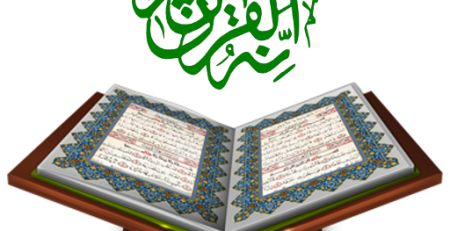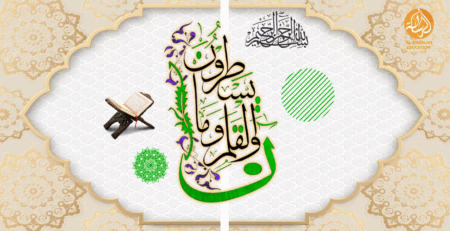Golden Age of Islam: Inventions and Success in Science
The Golden Age of Islam stands as a beacon of intellectual enlightenment in human history, a period where the pursuit of knowledge flourished, and scientific achievements reached unprecedented heights. From the 8th to the 14th century, Islamic civilization, spanning from Spain to Persia, made remarkable contributions to various fields, laying the groundwork for modern science and technology.
Introduction to the Golden Age of Islam
During the medieval period, while much of Europe languished in the Dark Ages, Islamic societies thrived, nurturing a vibrant culture of learning and innovation. This era, often referred to as the Golden Age of Islam, witnessed a convergence of diverse cultures, languages, and traditions, fostering an environment conducive to intellectual exploration and exchange.
Contributions to Science and Technology
Astronomy and Mathematics
Islamic scholars made significant advancements in astronomy and mathematics, building upon the knowledge inherited from ancient civilizations like Greece, India, and Persia. Pioneers such as Al-Khwarizmi, known as the “father of algebra,” revolutionized mathematical thinking with his groundbreaking treatises on algebra and algorithms.
Medicine and Healthcare Advancements
In the field of medicine, figures like Ibn Sina (Avicenna) produced monumental works such as the Canon of Medicine, which became standard textbooks in European universities for centuries. Their contributions extended to pharmacology, anatomy, and surgery, laying the foundation for modern medical practice.
Engineering and Architecture Marvels
Islamic engineers and architects left an indelible mark on the landscape, constructing awe-inspiring monuments like the Alhambra in Spain and the Dome of the Rock in Jerusalem. Their mastery of geometry and innovative use of materials resulted in structures that remain marvels of craftsmanship to this day.
Transmission of Knowledge
Central to the dissemination of knowledge during the Golden Age was the translation movement, where works from Greek, Persian, and Indian scholars were translated into Arabic, preserved, and eventually transmitted to Europe. This exchange of ideas catalyzed the Renaissance in Europe, sparking a renewed interest in science, philosophy, and art.
Impact on Western Civilization
The influence of Islamic civilization on Western society cannot be overstated. The translation of Arabic texts into Latin served as a catalyst for the European Renaissance, igniting a cultural and intellectual revival that reshaped the course of history. Concepts like zero, algebra, and the scientific method found their way into European thought, laying the groundwork for modern science and technology.
Key Figures and Scholars
The Golden Age of Islam produced a wealth of scholars whose contributions continue to resonate today. Figures like Al-Khwarizmi, whose name gave birth to the term “algorithm,” and Ibn al-Haytham, known for his groundbreaking work in optics and the scientific method, stand as testaments to the ingenuity and intellect of the era.
Inventions and Innovations
Algebra
Algebra, derived from the Arabic word “al-jabr,” was pioneered by Islamic mathematicians and revolutionized mathematical thinking by introducing abstract symbols and algebraic equations.
Optics and Camera Obscura
Ibn al-Haytham’s seminal work on optics laid the foundation for modern understanding of light and vision. His experiments with lenses and the camera obscura paved the way for advancements in photography and visual technology.
Scientific Method and Rational Inquiry
At the heart of Islamic scientific inquiry was a commitment to empirical evidence and rational inquiry. Scholars like Ibn al-Haytham emphasized the importance of observation and experimentation, laying the groundwork for the scientific method that would later define modern science.
Cultural and Societal Context
Islamic civilization fostered a culture of tolerance and intellectual freedom, where scholars from diverse backgrounds coexisted and collaborated in pursuit of knowledge. This multicultural exchange enriched scientific discourse and propelled innovation across disciplines.
Challenges and Decline
Despite its flourishing intellectual landscape, the Golden Age of Islam eventually waned due to various factors, including political instability, economic decline, and external pressures. However, the legacy of Islamic contributions to science and technology endured, leaving an indelible mark on human history.
Revival and Recognition
In recent years, there has been a renewed appreciation for the achievements of Islamic civilization, with efforts to reclaim and celebrate its scientific heritage. Initiatives to promote cross-cultural understanding and collaboration aim to build upon this legacy and foster a more inclusive global scientific community.
Modern Implications
The lessons of the Golden Age of Islam resonate in today’s interconnected world, where collaboration and exchange are essential for scientific progress. By recognizing and embracing diverse intellectual traditions, we can harness the full potential of humanity’s collective knowledge and expertise.
Educational Reforms and Initiatives
Educational reforms seek to integrate Islamic scientific achievements into curricula, ensuring that future generations appreciate the contributions of diverse cultures to the advancement of science and technology. By promoting understanding and appreciation of diverse intellectual traditions, we can foster a more inclusive and equitable society.
Celebrating Diversity in Science
Acknowledging and celebrating contributions from diverse cultures enriches scientific discourse and fosters a more inclusive scientific community. By embracing diversity in science, we can unlock new perspectives and approaches to solving the complex challenges facing humanity.
Preservation and Restoration Efforts
Efforts to preserve and restore historical sites and manuscripts ensure that the legacy of the Golden Age of Islam is safeguarded for future generations. Digital initiatives aim to make resources accessible worldwide, ensuring that the knowledge and achievements of Islamic civilization continue to inspire and educate.
Conclusion
The Golden Age of Islam represents a pinnacle of human achievement, where the pursuit of knowledge transcended boundaries of culture, language, and geography. By recognizing and celebrating the contributions of Islamic civilization to science and technology, we honor the rich tapestry of human intellectual history and pave the way for a more enlightened future.
FAQs
- How did Islamic scholars contribute to the development of mathematics? Islamic mathematicians made significant advancements in algebra, introducing concepts like algebraic equations and algorithms that laid the foundation for modern mathematical thinking.
- What role did Islamic civilization play in preserving ancient knowledge? Islamic scholars played a crucial role in translating and preserving works from Greek, Persian, and Indian traditions, ensuring that valuable knowledge was not lost to history.
- How did the Golden Age of Islam influence European Renaissance? The translation of Arabic texts into Latin during the Golden Age of Islam sparked a cultural and intellectual revival in Europe known as the Renaissance, laying the groundwork for modern science, philosophy, and art.
- What were some of the key architectural achievements of Islamic civilization? Islamic engineers and architects constructed monumental structures like the Alhambra in Spain and the Dome of the Rock in Jerusalem, showcasing their mastery of geometry and innovative use of materials.
- What lessons can we learn from the decline of the Golden Age of Islam? The decline of the Golden Age of Islam underscores the importance of political stability, economic prosperity, and cultural exchange in fostering an environment conducive to scientific and intellectual advancement.













Leave a Reply